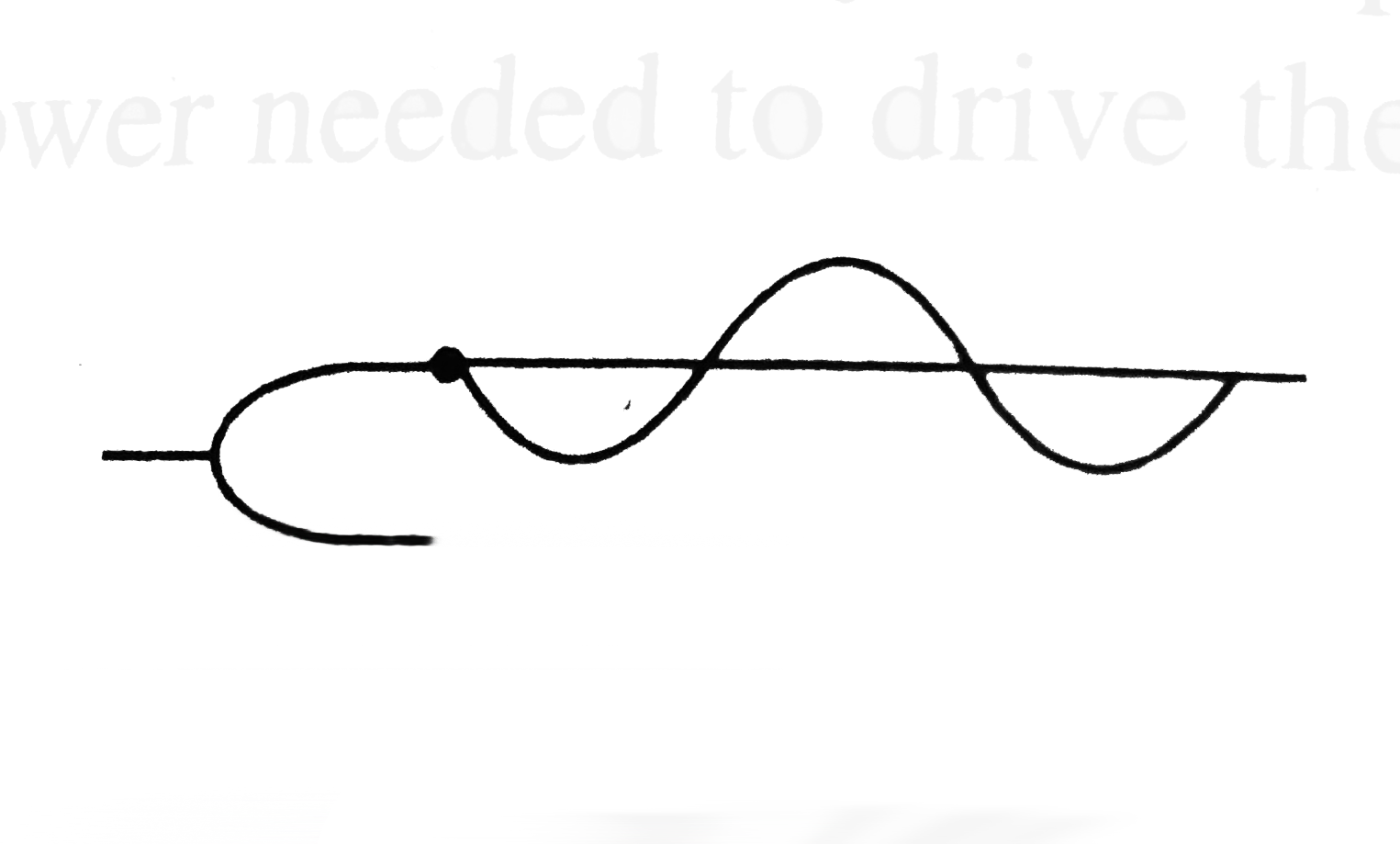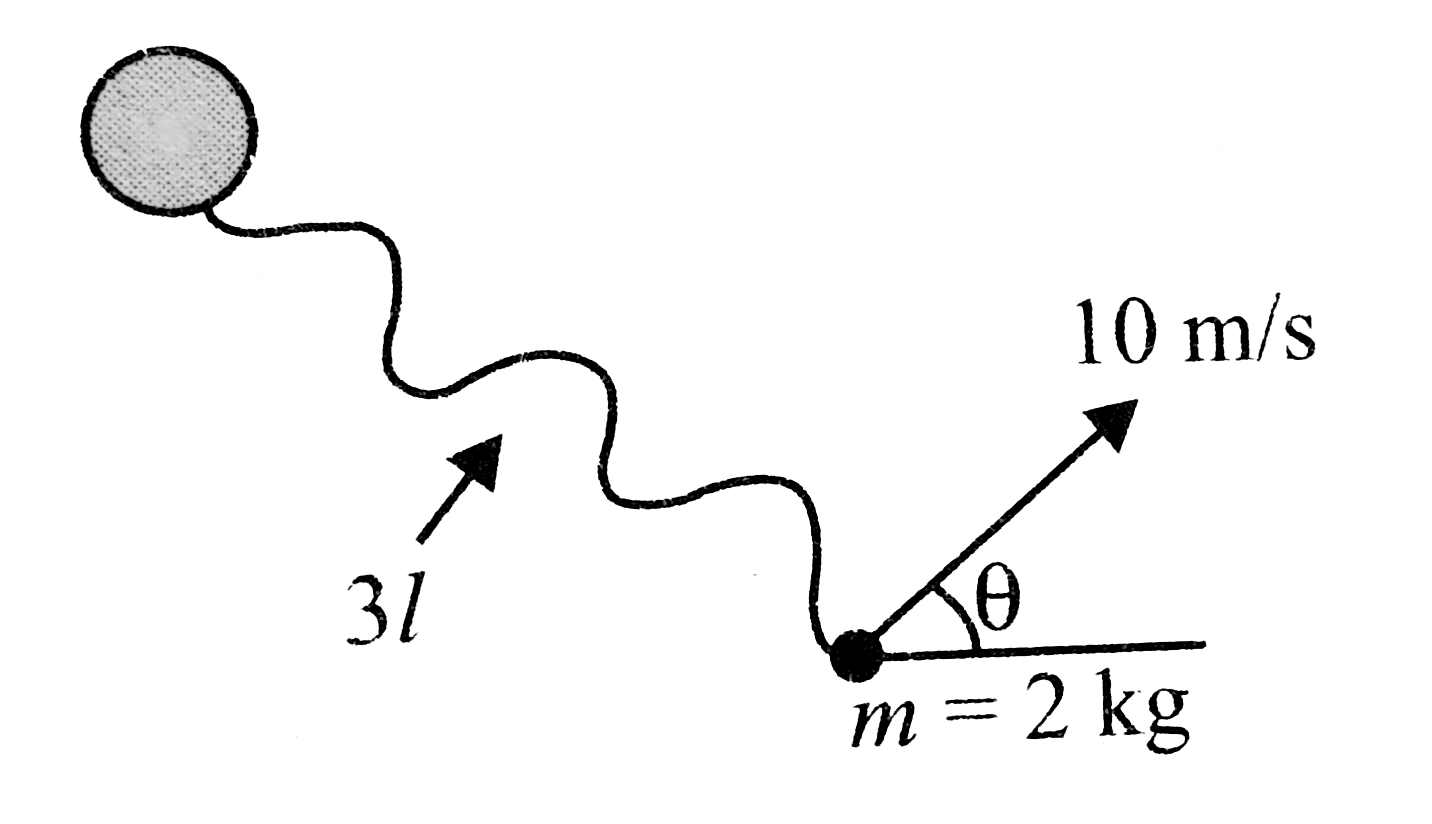The prong of an electrically operated tuning fork is connected to a long string of μ=1kg/m and tension 25 N, the maximum velocity of the prong is 1cm/s, then the average power needed to drive the prong is

5×10−4W
2.5×10−4W
1×10−4W
10−3W
The correct Answer is:b
Wave velocity: v=√Fμ=√251=5m/s
Average power: pav=12μv(ωA)2
=12μv(vp−max)2=12×1×5(1×10−2)2
=2.5×10−4W
Topper's Solved these Questions
- TRAVELLING WAVESBOOK - CENGAGE PHYSICS ENGLISHCHAPTER - TRAVELLING WAVESEXERCISE - Single Correct Answer
1 Videos
- TRAVELLING WAVESBOOK - CENGAGE PHYSICS ENGLISHCHAPTER - TRAVELLING WAVESEXERCISE - Multiple Correct
25 Videos
- TRAVELLING WAVESBOOK - CENGAGE PHYSICS ENGLISHCHAPTER - TRAVELLING WAVESEXERCISE - Subjective
16 Videos
- TRANSMISSION OF HEATBOOK - CENGAGE PHYSICS ENGLISHCHAPTER - TRANSMISSION OF HEATEXERCISE - Single correct
9 Videos
- VECTORSBOOK - CENGAGE PHYSICS ENGLISHCHAPTER - VECTORSEXERCISE - Exercise Multiple Correct
5 Videos
Similar Questions
The frequency of a tuning fork with an amplitude A = 1 cm is 250 Hz. The maximum velocity of any particle in air is equal to
View SolutionIn an experiment of standing waves, a string 90cm long is attached to the prong of an electrically driven tuning fork that scillates perpendicular to the length of the string at a frequency of 60Hz. The mass of the string is 0.044kg. What tension (in newton) must the string be under (weights are attached to the other end) if it is to oscillate in four loops?
View SolutionOne end of a horizontal rope is attached to a prong of an electrically driven fork that vibrates at 120Hz. The other end passes over a pulley and supports a 1.50kg mass. The linear mass density of the rope is 0.0550kg/m.
(a) What is the speed of a transverse wave on the rope?
(b) Whatis the wavelength?
How would your answer to parts (a) and (b) change if the mass were increased to 3.00kg?
View SolutionA stone of mass 0.5 kg is attached to a string of length 2 m and is whirled in a horizontal circle. If the string can with stand a tension of 9N, the maximum velocity with which the stone can be whirled is:
View SolutionA student performed the experiment to measure the speed of sound in air using resonance air-column method. Two resonances in the air-column were obtained by lowering the water level. The resonance with the shorter air-column is the first resonance and that with the longer air-column is the second resonance. Then,
A. the intensity of the sound heard at the first resonance was more than at the second resonance
B. the prongs of the tuning fork were kept in a horizontal plane above the resonance tube
C. the ampitude of vibration of the end of the prongs is typically around 1cm
D. the length of the air-column at the first resonance was somewhat than 1/4 th of the wavelength of the sound in air.
View SolutionA stone of mass of 16 kg is attached to a string 144 m long and is whirled in a horizontal circle. The maximum tension the string can withstand is 16 Newton . The maximum velocity of revolution that can be given to the stone without breaking it, will be
View SolutionA string of length 3l is connected to a fixed cylinder whose top view is shown in Fig. The string is initially slack. The other end of the string (connected to a marble) is moving at a constant velocity of 10m/s as shown. The string will get stretched at some instant and impulsive tension occurs in the string. If hinge is exerting a force of 40000N for 0.25ms on the cylinder to bear up the impact of impulsive tension, then mark the correct statements. (Take string to be light, breaking tension of the string is 2x105N)

View SolutionThe velocity of transverse wave in a string is v=√T/m where T is the tension in the string and m is the mass per unit length . If T=3.0kgf, the mass of string is 25g and length of the string isv=1.000m, then the percentage error in the measurement of velocity is
View SolutionIf in an experiment for determination of velocity of sound by resonance tube method using a tuning fork of 512Hz, first resonance was observed at 30.7cm and second was obtained at 63.2cm, then maximum possible error in velocity of sound is (consider actual speed of sound in air is 332m/s)
View SolutionA vibrating string of certain length l under a tension T resonates with a mode corresponding to the first overtone (third harmonic) of an air column of length 75cm inside a tube closed at one end. The string also generates 4 beats per second when excited along with a tuning fork of frequency n. Now when the tension of the string is slightly increased the number of beats reduces 2 per second. Assuming the velocity of sound in air to be 340m/s, the frequency n of the tuning fork in Hz is
View Solution
